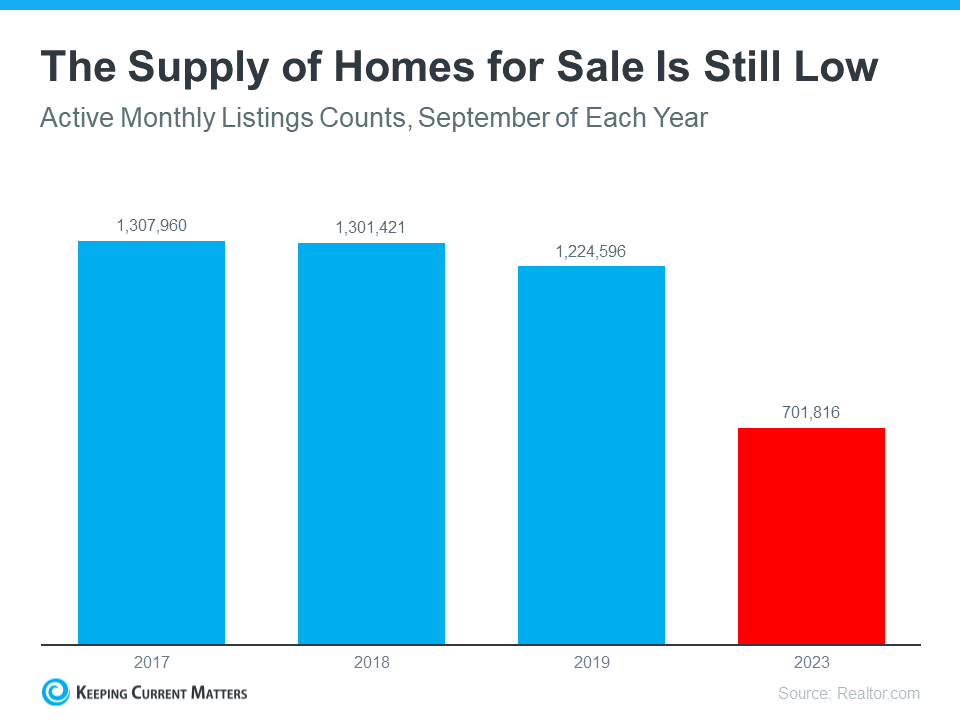1. Killeen, TX
Average down payment (percentage): 5.3%
Median down payment: $2,182
Median home list price: $325,000
It’s not a surprise that Killeen made our list. The city, about an hour north of Austin and an hour southwest of Waco, is an Army town, home to Fort Cavazos, formerly called Fort Hood. It’s the largest military base in Texas with more than 53,000 soldiers and their families based here.
Many of the area’s buyers are either active service members or veterans and have access to popular VA loans that don’t require a down payment. Those loans pushed down the average down payment in the local housing market.
The market also doesn’t appear to be as competitive as other places on our list. The number of homes for sale was up 37.3% in September compared with a year earlier, according to the most recent Realtor.com data. Homes are also staying on the market for 34% longer, at a median of 56 days.
Most of the homes for sale in Killeen are single-family houses. Buyers can still find plenty of brick ranches for less than $200,000, including this 1,300-square-foot, three-bedroom, two-bathroom home priced at $170,000. There is also new construction, including this four-bedroom, three-bathroom house for about $450,000.
2. Fayetteville, NC
Average down payment (percentage): 5.9%
Median down payment: $2,779
Median home list price: $330,000
Fayetteville is another military town with more than 50,000 soldiers stationed at Fort Liberty, formerly known as Fort Bragg.
The fort “is responsible for a disproportionate number of sales,” says real estate broker Bernard Fleming, of Fleming Real Estate. “We know that every year a number of soldiers are going to be coming to be stationed here and a number are going to be moving out.”
The loan of choice for these military buyers is VA mortgages. However, the market has become so competitive due to the lack of homes for sale that even VA buyers might now be making small down payments and offering over the list price to spur sellers to choose their offers.
“People are still waiting in line to get homes,” says Fleming.
3. Shreveport, LA
Average down payment (percentage): 6.7%
Median down payment: $4,587
Median home list price: $245,000
The city in northwest Louisiana, known for its riverboat casinos, is also popular with military buyers.
The area is home to the Barksdale Air Force Base, which has a population of about 15,000 active-duty personnel, reservists, and civilians. The city also has the Overton Brooks VA Medical Center.
Buyers can find this three-bedroom, two-bathroom home on the market for $250,000. Those looking for some space to stretch out in can check out this three-bedroom, 1.5-bathroom cottage with a deck on an acre of land. It’s priced at $269,000.
4. Huntington, WV
Average down payment (percentage): 8.2%
Median down payment: $4,802
Median home list price: $179,900
The second-largest city in West Virginia, the former manufacturing hub is home to Marshall University and Camden Park, one of the nation’s oldest amusement parks.
However, the area has been hurt by the decline in manufacturing. Many residents left the metro in the second half of the 20th century. Then the opioid crisis struck. Today, nearly a third of the residents of the city proper lived in poverty in 2022, according to the U.S. Census Bureau.
The troubles that have plagued the area have resulted in some of the lowest home prices on our list—about 58% less than the national median list price.
This two-bedroom, two-bathroom Cape Cod, spanning about 2,500 square feet, is on the market for $179,900 after a $5,000 price cut.
5. Augusta, GA
Average down payment (percentage): 8.3%
Median down payment: $5,586
Median home list price: $302,430
Augusta is yet another military hub where homebuyers are making low—or no—down payments. Fort Eisenhower, formerly known as Fort Gordon, is located just southwest of the city. It was designated as the U.S. Army Cyber Center of Excellence in 2014.
“You got a lot of VA buyers,” says Frank Mears, senior vice president of Meybohm Real Estate in Augusta. “You have first-time buyers who are using FHA loans.”
Buyers who use FHA loans can often put down as little as 3.5%.
But there’s a shortage of homes here. Even when military personnel leave the fort, they often keep the home they own and use it as a rental property, says Mears. Many plan to return to the fort in the future or anticipate retiring in the area.
Sellers generally prefer buyers who can put some money down. In some areas where there aren’t many homes for sale, buyers might still have to waive home inspections and appraisals to compete with multiple offers.
“If there’s no inventory, the only way you’re going to get a house in that neighborhood is if you have no contingencies,” says Mears.
The rest of the top 10 metros with the lowest down payments were Mobile, AL, with buyers putting down an average of 8.5% of the home sale price; Virginia Beach, VA, at 8.7%; Gulfport, MS, at 8.9%; Lakeland, FL, at 9.4%; and Peoria, IL, at 10%.
Learn more at Realtor.com
Related Links
If there is a home that you would like more information about, if you are considering selling a property, or if you have questions about the housing market in your neighborhood, please reach out. We’re here to help.
Search Homes in Colorado
Search Homes in North Carolina
Search Homes in Oklahoma
Search Homes in Oregon
Search homes in Minnesota









